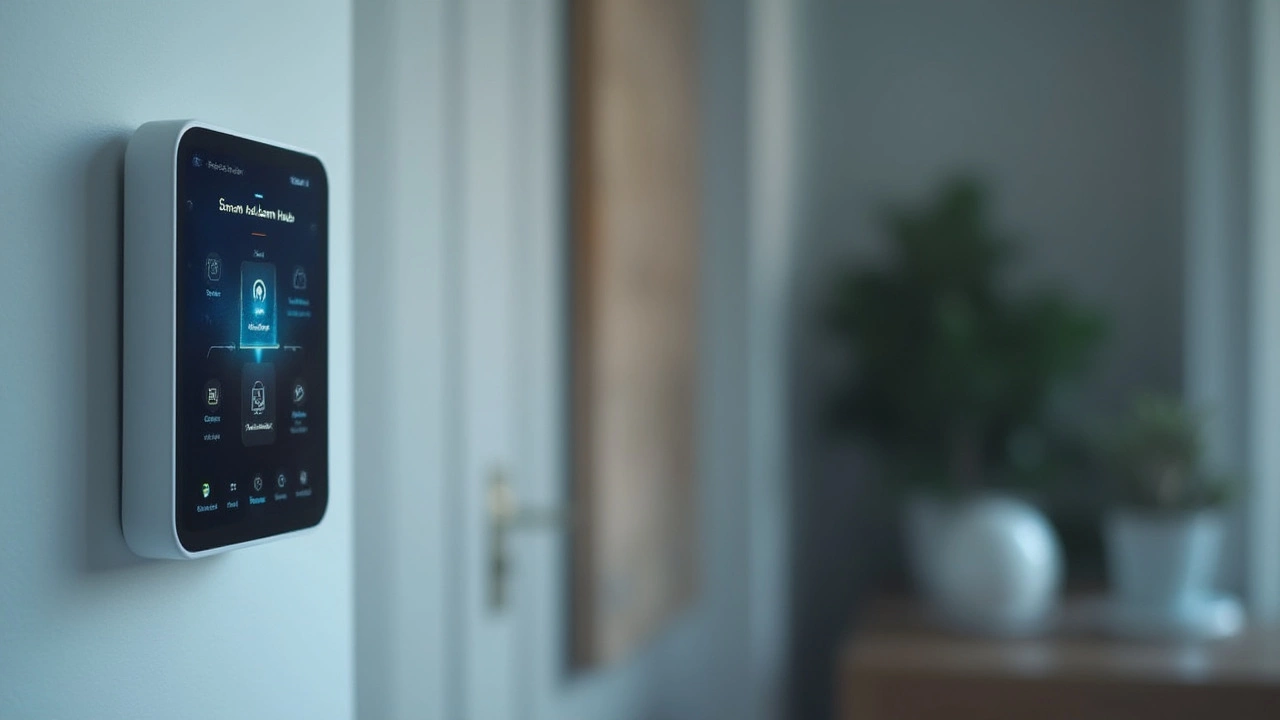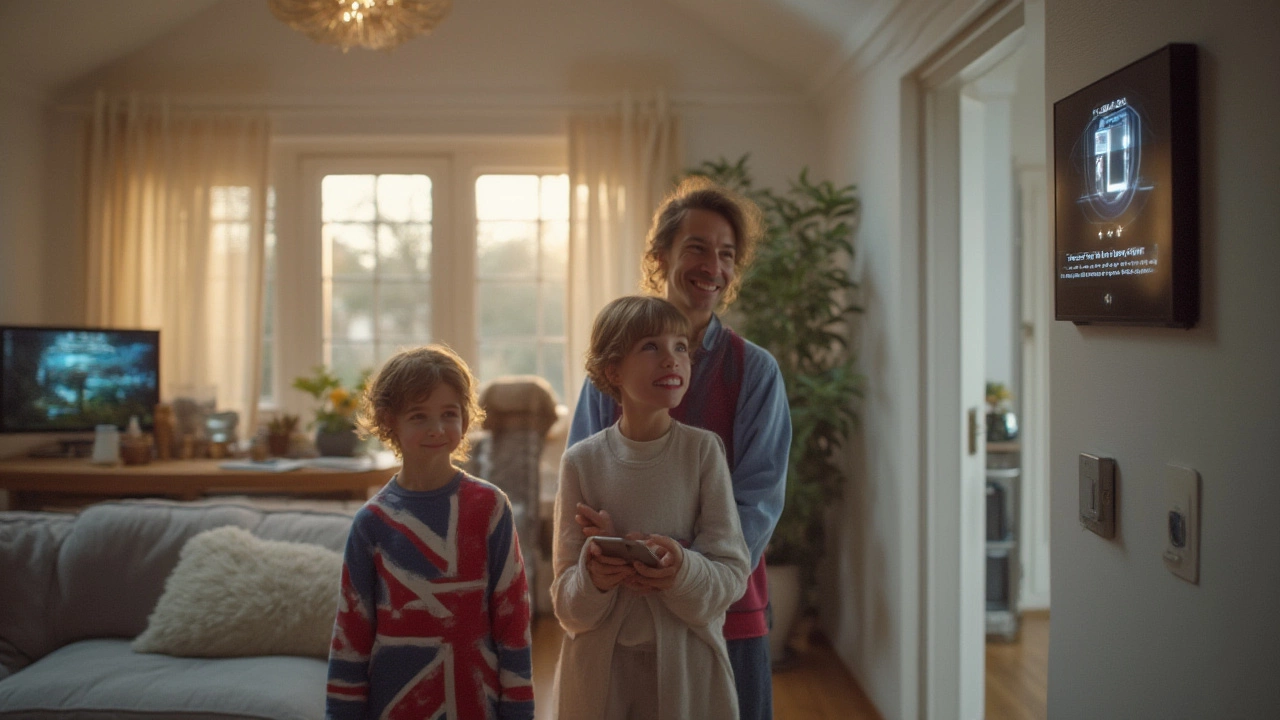If you think locking the door is enough to keep your home safe, I wish I lived in your neighborhood. These days, burglars often check Facebook, Google Maps, and even delivery schedules to pick the perfect target. Around 2.5 million burglaries happen every year in the U.S., and police solve less than 14% of them. The real kicker? Most break-ins last under 10 minutes and happen between 10 a.m. and 3 p.m. That’s why home security systems are more than just a flashy add-on—they’re peace of mind. I put together my top three based on ease of use, protection, cost, and the cool tech features that actually help, not just look good in ads.
SimpliSafe: Reliable, Customizable, and No-Nonsense
SimpliSafe stands out because it makes home security easy and stress-free, even if you’re not a tech pro. The company started in 2006, aiming to help people protect their homes without a huge contract or installation headache. Today, YouGov polls and Consumer Reports regularly rank SimpliSafe among the top security brands for satisfaction. Here’s why it works: you set up everything yourself, usually in under an hour. That means drilling zero holes and not waiting for an installer to show up "sometime between 8 a.m. and midnight." Each kit starts with a base station, keypad, and sensors (door, window, and motion). If you want to keep an eye on Rex, like I do with my big German shepherd, SimpliSafe offers indoor cameras with two-way talk and night vision. You can add flood sensors, smoke detectors, even a panic button. If you’re into smart homes, it works with Alexa and Google Assistant, although I find barking dogs work just as well at scaring off porch pirates.
The monitoring options are what set SimpliSafe apart. You can self-monitor (get alerts to your phone, no monthly fee) or go with professional monitoring for about $20 to $30 a month. With pro monitoring, experts at SimpliSafe’s call center respond to alarms 24/7, contacting you and then sending police or fire services as needed. No long-term contracts or sneaky cancellation fees. They also feature something called "SmashSafe": if an intruder tries to destroy the keypad, the base station sends out a silent signal anyway. It’s genius. If you ever move, the system comes with you since everything is wireless.
One cool fact: City police in Berkeley, California, said homes with professionally monitored systems (like SimpliSafe) are 60% less likely to get broken into. The company claims their sensors work down to -10°F, so no worries if you live somewhere frigid or have to protect a backyard tool shed. Battery life for sensors is usually 3-5 years before you swap them. Their customer support—even late at night—has a reputation for actually picking up the phone. New for 2025, SimpliSafe now includes package theft deterrent features that flash lights and sound a different chime when someone approaches your porch, cutting down on Amazon package disappearances.
If you want to see how their prices and monitoring stack up, here’s a quick rundown:
| Plan | Professional Monitoring | Monthly Cost | Contract | Mobile App Access |
|---|---|---|---|---|
| Self-Monitor | No | $0 | None | Yes (limited) |
| Standard | Yes | $19.99 | None | No |
| Interactive | Yes with alerts/control | $29.99 | None | Yes |
Tips for owners: Set up secret PIN codes for friends or family and check your sensor batteries twice a year when you change your clocks. Don’t forget the glass break sensors near large windows—those are often a sneaky point of entry. If you have pets, like Rex, SimpliSafe’s pet-immune motion sensors work for animals up to 50 lbs, so you won’t get false alarms every time the dog chases his tail.

ADT: Massive Monitoring Power and Full-Service Installation
When people think "home security," most think ADT. There’s a reason ADT Blue yard signs are everywhere: their network is huge, with over 6 million customers and nine fully staffed monitoring centers across the U.S. That redundancy means if one monitoring center is hit by a storm or blackout, another picks up the slack instantly. Very few brands offer that level of safety net. Another big point—ADT’s emergency response rates are some of the fastest measured by Security Sales & Integration Magazine back in 2022, averaging less than 30 seconds from alarm trigger to emergency dispatch.
ADT’s main offering is a traditional, all-in-one security setup. A pro comes to your house, sets everything up, tests it with you, and sticks the blue “protected by ADT” sign in the yard. Sensors cover every door and window. You can add in fire, CO2, and even flood sensors. Their cameras offer HD clips, two-way audio, activity zones, and AI-powered facial detection (it’s smart enough not to freak out when Rex is checking the mailman). Mobile control is slick, letting you arm or disarm from anywhere or check the live feed during vacation. Their system integrates into most major smart home platforms—Amazon Alexa, Google Home, and Z-Wave lights or locks. There’s also a built-in smart garage feature: if you see the garage door open in the live feed, you can close it right from your app.
ADT isn’t cheap. The typical monthly cost goes from $45 to $60, and they usually require a 36-month contract. But what you get is real, round-the-clock pro monitoring, burglary, fire, and medical alerts. If something goes wrong—a break-in, fire, or even carbon monoxide leak—ADT dispatchers are known for checking on homeowners within seconds. Their response times are among the industry’s best, and insurance companies will sometimes even offer a premium discount if you can show an active ADT account. If you want, ADT can set up smart locks and video doorbells the same day—goodbye, waiting game with package thieves.
Here’s something most people don’t realize: according to a 2023 study published by Rutgers University, homes with clearly displayed security provider signs (ADT was the example in their study) experienced up to 33% fewer burglary attempts. Criminals want quick, easy targets, so just the sight of that blue sign can make them move to a different house.
Quick reference for what ADT brings to the table:
| Feature | Included |
|---|---|
| 24/7 Pro Monitoring | Yes |
| Remote Mobile App | Yes |
| Video Surveillance | Yes (optional) |
| Environmental Sensors | Yes |
| Smart Home Integration | Yes |
| Contract Required | Yes (36 mo.) |
Best tips if you go with ADT: Walk through your home with the installer and ask about hidden weak points, like basement windows or attic access. A lot of successful break-ins happen where homeowners don’t think to place sensors. Also, ask the rep about silent alarm activation—this can send help without making noise, perfect if you’re home during a break-in. Make sure your Wi-Fi is stable and secure so the smart features don’t freeze up when you need them.

Wyze Home Monitoring: Smart Security on a Tight Budget
For anyone who doesn’t want to spend a fortune or commit to years-long contracts, Wyze is a no-brainer. This up-and-coming brand started off selling the cheapest smart cameras around, and they’ve added full home monitoring that actually works. For under $10 a month—including pro monitoring and cloud alerts—you get a surprisingly complete package that rivals much pricier setups. The basic Wyze Home Monitoring kit comes with a hub, keypad, entry sensors, and motion sensors that are so compact you can hide them on almost any window or door frame. You’ll add cameras separately, and they connect over Wi-Fi. What surprises people most is how quick it is to set up. A lot of users (myself included) get the Wyze kit installed, app connected, and working in under half an hour. No drilling, no major headaches.
The Wyze app gives you total control—from arming your system to checking out live camera feeds or getting smart alerts when unusual activity happens. The motion sensors are "pet-friendly," calibrated so pets up to 55 lbs (like a slightly tubby Rex) won’t keep setting off the alarm. Wyze has smart AI that tells you if it’s a person, a package, or just some tree branches moving. Their system works great in apartments, condos, or starter homes—anywhere you want defense but don’t want to spend big.
Here’s a detailed price comparison so you can see how far your money goes:
| Wyze Kit Feature | Included in Box | Monthly Cost (with monitoring) |
|---|---|---|
| Control Hub | Yes | $9.99 |
| Keypad | Yes | $9.99 |
| Door/Window Sensors | 2 | $9.99 |
| Motion Sensor | 1 | $9.99 |
| Cameras (sold separately) | No | Extra |
The thing that stands out about Wyze is how they handle alerts. The monitoring partner, Noonlight, calls you and dispatches police if needed. If you answer and give a safe word, they cancel; if not, help comes. That’s a level of pro support usually reserved for much, much pricier options. Wyze cameras also have built-in sirens and customizable motion zones. There’s even built-in cloud backup, so if a thief smashes or grabs your camera, you still have the footage. Their monitoring is month-to-month, no contracts.
Wyze tips: Place cameras at eye level outside, especially at the main entry and any side gates. For indoor sensors, make sure the motion detectors are not aimed at heaters or vents—they’ll pick up heat, not just movement, and send false alarms. If you have pets, use the lowest motion setting first. Since Wyze uses your home Wi-Fi, make sure your router has a strong password so someone can’t hack your cameras.
Final thoughts? The best home security systems do more than beep when a door opens—they deter thieves, watch your stuff when you’re away, and give you a direct line to help in a crisis. Whether you want pro-level monitoring like ADT, the flexible DIY style of SimpliSafe, or affordable smart tech with Wyze, securing your home and making sure Rex (or your family) stays safe doesn’t have to be a nightmare. Check your options, stay alert, and keep those doors locked even during daylight—sometimes, peace of mind is the best upgrade you can make.

